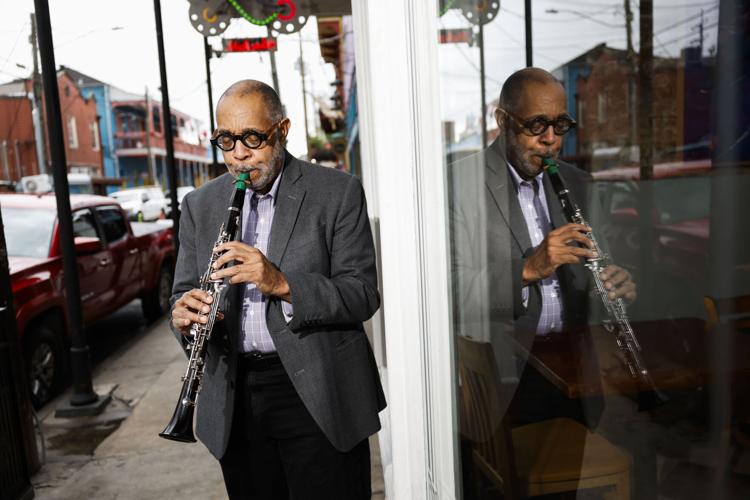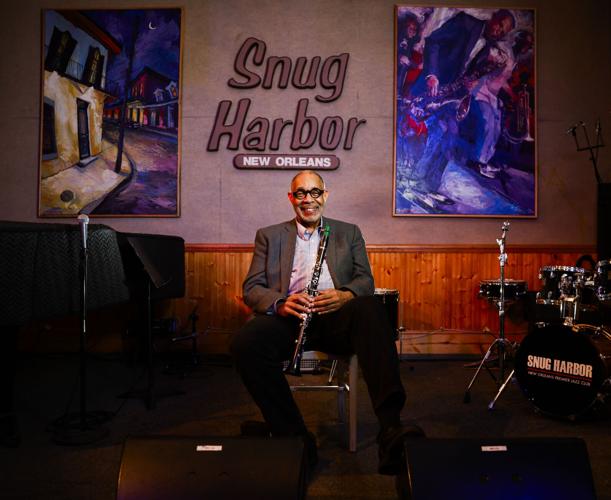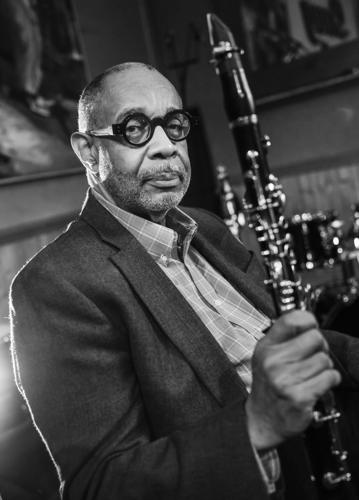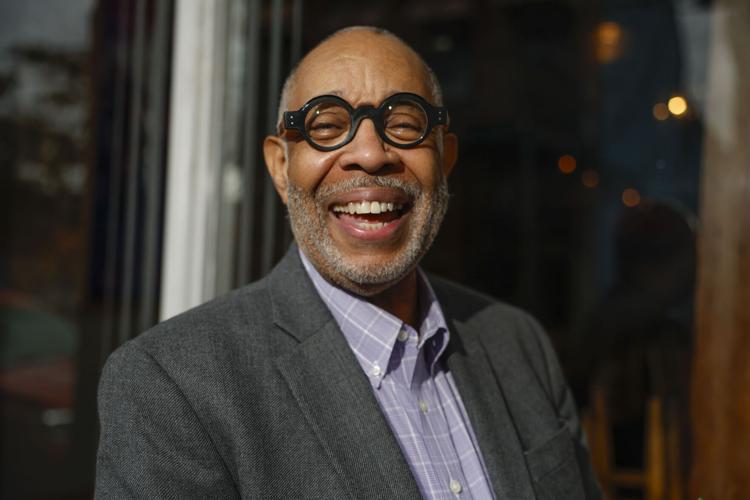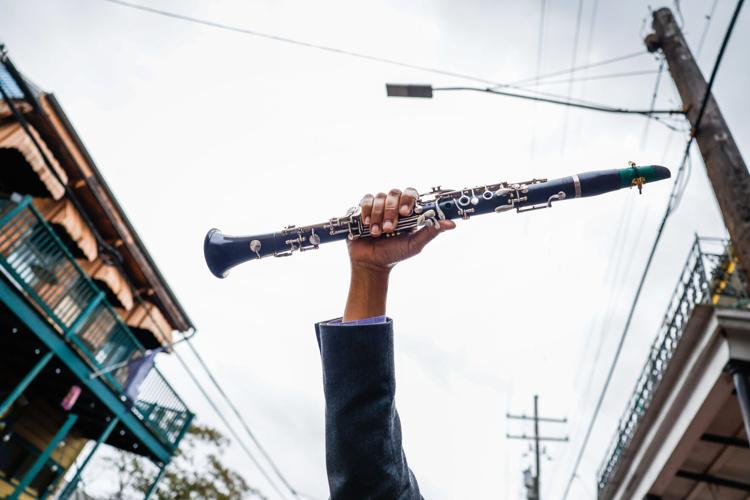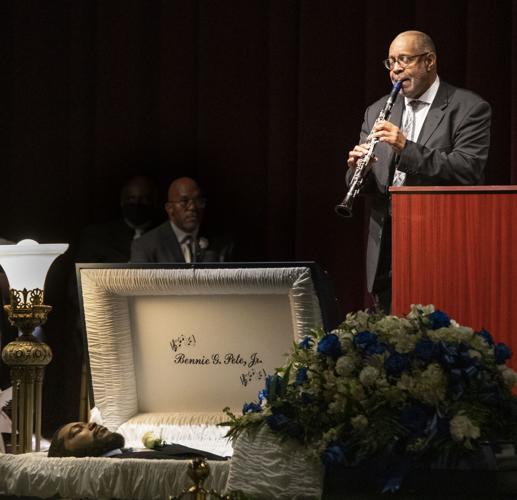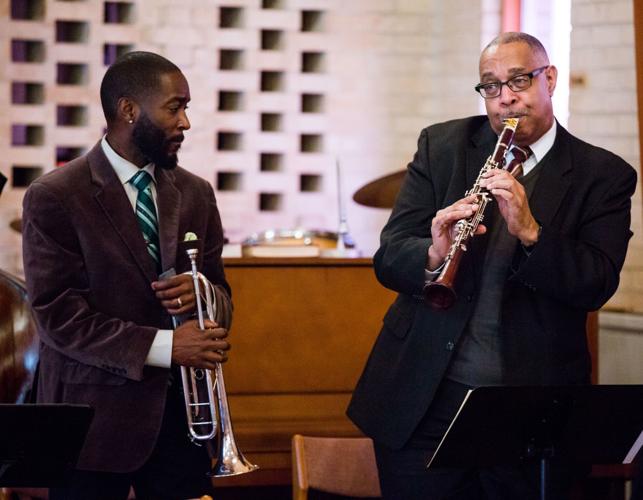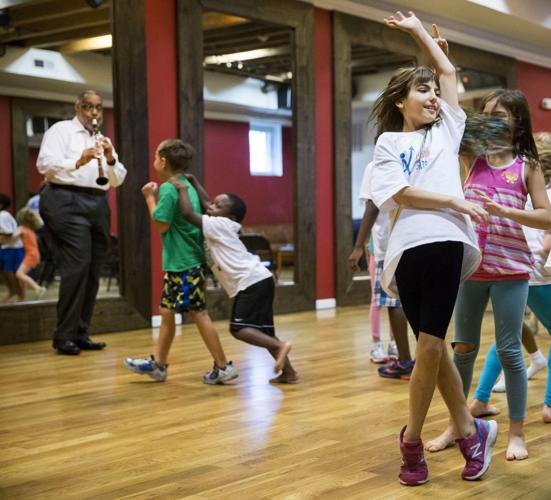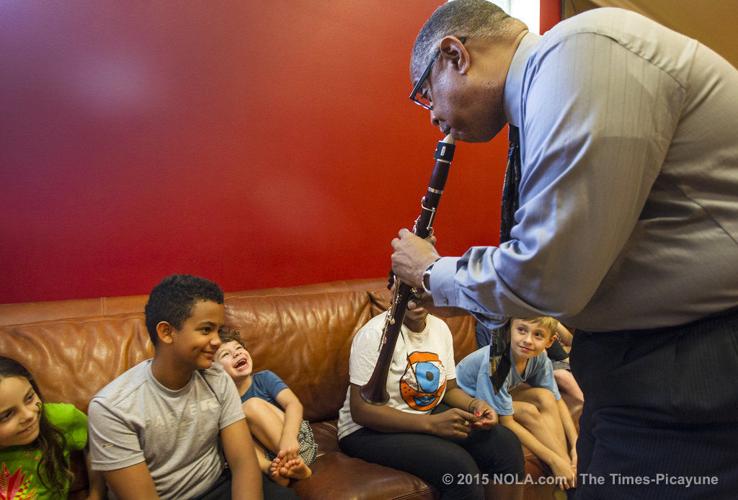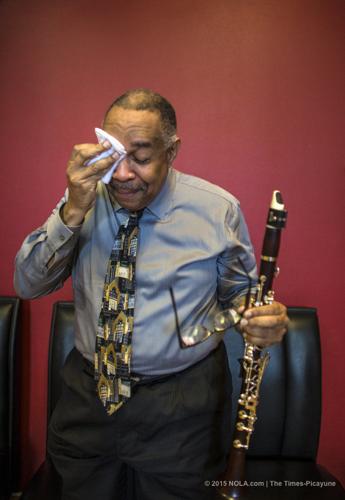This is the final story in The Guardians, a 6-part series highlighting those dedicated to saving and passing down New Orleans' unique heritage.
Posing for a photographer outside Frenchmen Street’s Snug Harbor Jazz Bistro recently, clarinetist Michael White did what he does most days: he made up a song.
As melodious notes tumbled from his horn, a passing tour van stopped so its occupants could listen. One man from Pittsburgh was so smitten with the sound that he hopped out to take a picture with White.
“I’m in awe of you,” the tourist gushed.
If the tour guide intended to give his customers a true taste of traditional New Orleans jazz, this impromptu sidewalk set was a good place to start.
At 69, the professorial and unfailingly pleasant White has devoted much of his adult life to performing, preserving and perpetuating the music.
“New Orleans jazz," he says, "changed my life.”
He’s twice amassed an enormous trove of early jazz-related material and memorabilia, having lost most of his first collection to Hurricane Katrina’s levee breaches.
But beyond documenting the jazz of the past, White works hard to create traditional New Orleans jazz for now — and for the future.
During his 43 years at Xavier University, he taught classes on African American music and curated presentations, panels and workshops about early jazz. He encourages young musicians to play it.

The Smithsonian's National Portrait Gallery in Washington D.C. added this portrait of New Orleans clarinetist Michael White, by Timothy J. Clark, to its collection in 2023.
More importantly, he has composed hundreds of new traditional jazz songs, pumping fresh life into the genre. Those songs enliven not only the repertoire of his own Original Liberty Jazz Band but the repertoires of traditional New Orleans jazz bands around the world.
“Dr. White is probably the most knowledgeable performer of traditional New Orleans jazz on the planet,” said Mark Samuels, the founder of Basin Street Records, which has released a half-dozen of White’s albums.
“He has made it his life’s work to live with and understand not only the music, but the tradition. He makes himself available to those who want to understand the music, and hires young artists who want to put in the work."
Blues guitarist Chris Thomas King, who has worked with White on scholarly presentations, says they are "kindred spirits who, as young kids, honed our skills at the feet of originators.
"Michael is a master of the classic New Orleans blues and jazz style. I’ve heard him express the vulnerabilities, aspirations, and joyousness of our culture like few others can."
Indicative of his status, the Smithsonian’s National Portrait Gallery in Washington recently added a dignified rendering of White by artist Timothy J. Clark to its collection.
“I’m very honored, because it’s not just me,” White said. “All the older musicians I knew in this New Orleans tradition….I feel like that is there with me (in) the portrait.”
Playing jazz 'wasn't a choice'
His first close encounter with a clarinet as a boy came courtesy of an aunt who played one. “She had such joy on her face,” White recalled, “and I just loved the sound of the instrument.”
At Carnival parades, he admired St. Augustine High School’s Marching 100. Inspired, he enrolled at St. Aug and joined the school’s symphonic and marching bands. He also took private lessons from legendary band director Edwin Hampton.
Though the Marching 100 didn’t play traditional jazz, “it was excellent training,” White said. “I had a good foundation at St. Aug.”
Back then, he listened to other genres, including modern jazz.
“But when I heard New Orleans jazz, it just spoke to me. It felt like it was defining what it means to be Black and from New Orleans — the way people talk, think, laugh, dance, walk, breathe.
“It felt like things I wanted to say but couldn’t say with words. It felt like a connection to my ancestors somehow.”
For him, playing traditional jazz “wasn’t a choice. It defined my life’s experience in ways that I had never heard before. I was hopelessly drawn to the music, because it was something that was inside of me all along."
He spent time in the Fairview Baptist Church Band, founded by jazz banjoist Danny Barker to encourage young musicians to play traditional jazz, as well as Doc Paulin’s Brass Band and the Young Tuxedo Brass Band.

Michael White performs a song inspired by his friend Bennie Pete Jr. during his funeral service at the Carver Theater in New Orleans on Oct. 2, 2021. Pete Jr., the Hot 8 Brass Band's co-founder and sousaphonist, died on Sept. 6, 2021 of complications from COVID-19 and sarcoidosis. He was 45.
His scholarly interest in music deepened while pursuing his doctorate in Spanish at Tulane University. Academia taught him “to read, write, research and speak on a high level. Inadvertently, I applied those skills to learning about jazz. I wanted to know more about the history and the people that made the music — what were their artistic and social objectives and goals? — because they felt like relatives to me.”
He spent his spare time in Tulane’s Hogan Archive of New Orleans Music and New Orleans Jazz, pouring over primary source material. He befriended musicians born as early as the 1890s, interviewed them and shared stages with them.
During set breaks, he’d collect their broken and discarded banjo and bass strings, reeds and drumsticks. At home, he’d bag and tag these treasures, preserving them for posterity.
He accumulated thousands of recordings, copies of sheet music, unpublished photographs, historic instruments, hat bands from brass bands and much more.
“I was so interested in the music that I just started collecting things without really planning or thinking about it,” he said. “Before you knew it, I had a little museum collection.”

Traditional jazz clarinetist Michael White holds up his clarinet on Frenchmen street in New Orleans, Friday, Dec. 8, 2023.
White’s return to his wrecked home alongside the London Avenue Canal, and his effort to rebuild his life and its music, is featured prominently in author Jason Berry’s jazz funeral documentary “City of a Million Dreams.”
“That first time coming back, it was very difficult,” White said. “When I looked at the clarinets all over the house, pieces everywhere, it looked like bodies to me.”
Fortunately, he’d taken a dozen instruments along when he evacuated, including an old B-flat Albert system clarinet that belonged to early New Orleans jazzman Omer Simeon. That horn was the model for the 150-foot-tall mural that adorns the downtown Holiday Inn.

Michael White, top right, plays the clarinet as he leads Michaela Harrison, Aaron Covin, and Cameron Clark, back right, in a slow musical march around the Hurricane Katrina Memorial in New Orleans on August 29, 2015. It was the 10th anniversary of the historic storm.
“Every time I see that clarinet (mural), I have to smile,” White said, “because I feel like I did leave some kind of mark on the city.”
Writing hundreds of songs
The mark he’s left goes well beyond the mural.
He’s contributed to more than 100 albums and released 15 of his own.
It was frequent collaborator Wynton Marsalis who encouraged him to focus on composing original music. Retreats to A Studio in the Woods in Algiers facilitated his creativity.
But in early 2020, he discovered that musical ideas came to him in the morning quiet of his Xavier office. The flow of ideas “was like a radio.
“I realized I could just pick up my horn, don’t even think about it, just play a note or two, and that would lead me down a path.”

Leon Brown looks on as Dr. Michael White plays the clarinet during the jazz service at the Norwegian Seaman's Church in New Orleans, La., Sunday January 8, 2016.
In the past three, prolific years, he has composed several hundred songs in whole or part.
“I have them in boxes all over the place. I don’t concern myself with style. Whatever is there, I write it down. A lot is traditional New Orleans jazz — hymns, blues, rags, marches, pop songs from that era. But whatever comes up, that’s what I write.”
Now retired from Xavier, where he held the Rosa and Charles Keller Endowed Chair in the Humanities, he can devote even more time to the songs that spill out of him daily.
New music, he believes, is essential if traditional jazz is to remain vital. Jazz bands in Japan, France and England play his song “Give It Up (Gypsy Second-Line).”
“There’s a need to have fresh blood in this music. There are bands around the world that are looking for that.”
Despite his efforts, he has mixed feelings about the music’s future in the city of its birth.

Traditional jazz clarinetist Michael White poses at Snug Harbor in New Orleans, Friday, Dec. 8, 2023.
“Not a lot of New Orleans natives are taking up the traditional style. Tourism and commercialism breed a lot of what comes out musically. It’s very difficult to see the social significance and the art of traditional music beyond just playing familiar songs to please tourists. That’s a little frustrating.
“When I see kids looking at our music, I’m always hoping, ‘Are you the next one?’”
Meanwhile, fans in Japan, Europe, South America, Canada and Australia know about New Orleans jazz pioneers Bunk Johnson, George Lewis and Johnny Dodds — and about Michael White.
Traditional New Orleans jazz “has become like an international language among this small group of fans and musicians that play the music and keep it going,” White said.
“In that sense, I think it will keep going on. How much it will go on in New Orleans remains to be seen.”

